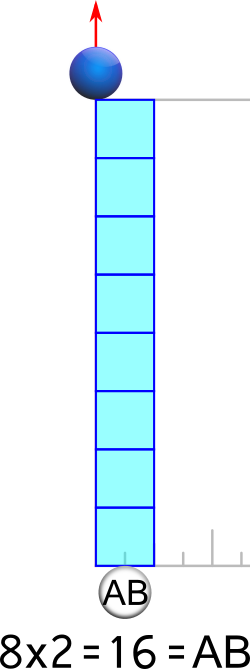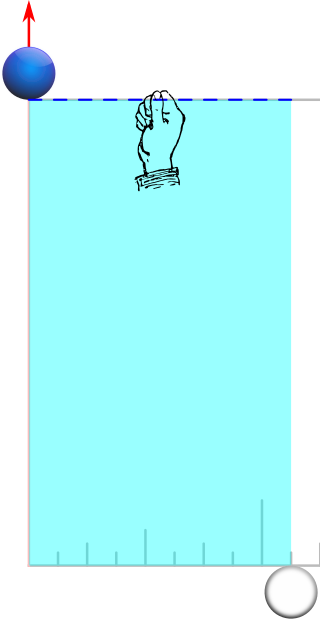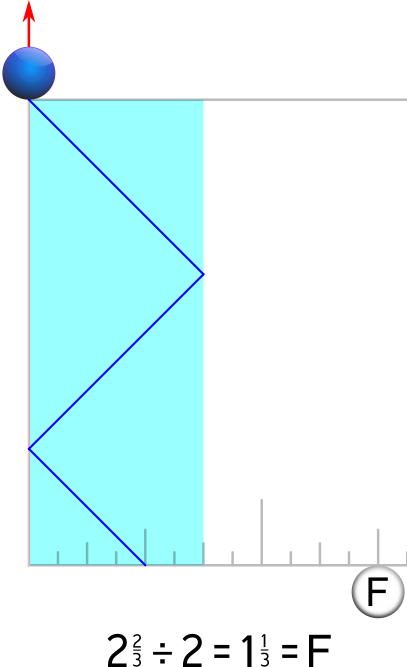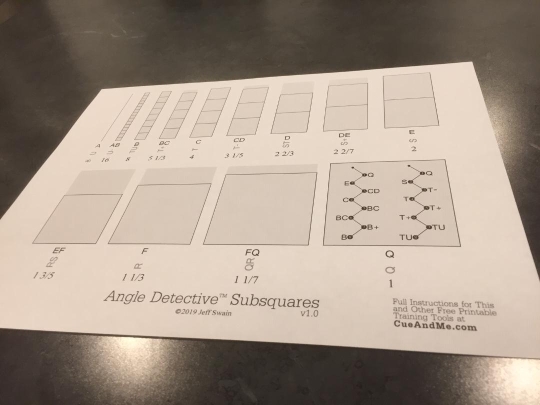SubSquare Shortcuts and Conveniences
Window Shade
After drawing the first line that determines the length of a subsquare side, the window shade technique takes that line and drags it towards the other end of the shot rectangle until you sense that you have created the first subsquare. You then copy this square as many times as necessary until you reach the other end of the shot rectangle.
Double Width and Double
For narrow shot rectangles it can be helpful to double their width before counting subsquares. Simply double the width of the rectangle, apply one of the subsquare pattern sequences to count subsquares, and then multiply by 2. You now have the total number of subsquares for the original narrow shot rectangle.
Where to double the rectangle is up to you. You can double it by going in the ‘Q’ direction
or you can double it in the opposite direction resulting in its doubled portion lying beyond the Master Square’s near side (or top side for shots 45° and over).
Halve Width and Half
It can also sometimes be helpful to halve the width of a wide rectangle before counting subsquares. Simply make the rectangle half as wide, apply a subsquare pattern sequence to count subsquares, and then halve the result. You now have the total number of subsquares for the original wide shot rectangle.
SubSquare Sensing
If you’re good at visualization, you can perhaps picture a square then visualize resizing it to fit into the first subsquare position. From there you can copy and stack new squares as many times as necessary. Or you could sense where to draw a single line that represents the shared side of two adjacent subsquares and continue drawing and counting these lines as many times as necessary.
SubSquare Destinations
Rather than using numbers when counting subsquares, you may wish to use the labels that each number of subsquares would represent if the current subsquare were the full and final subsquare. Our subsquare chart showed us that for shots 45° and under, 1 full subsquare would be the shot rectangle ‘Q’; 2 full subsquares would be the shot rectangle ‘E’; 4 full subsquares would be ‘C’; and so on.
So we can count successive lines as we draw them according to the following sequence:
Subsquares
1
2
3
4
5
6
7
8
Shot Label
Q
E
CD
C
BC
BC
B+
B

For shot rectangles 45° and over, the subsquare sequence would be Q, S, T-, T, T+, T+, TU, TU.







